10th August 2020
Romans under our feet
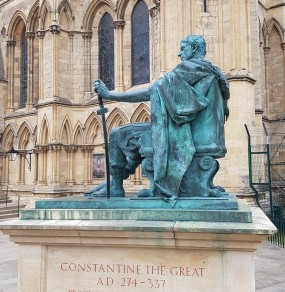 Walking around York there are many visual reminders that York was once a Roman city. Sometimes what we can’t see is even more fascinating; there are tantalising stories from the past lying just below our feet. Anne Houson writes about some examples:
Walking around York there are many visual reminders that York was once a Roman city. Sometimes what we can’t see is even more fascinating; there are tantalising stories from the past lying just below our feet. Anne Houson writes about some examples:
In 1951 local children playing on rough ground at the bottom of Trentholme Drive, near the main road, discovered human bones, including skulls, and pottery. Richard Yorke, then a pupil at Manor Secondary Modern School in York, took some of the finds to the Yorkshire Museum.
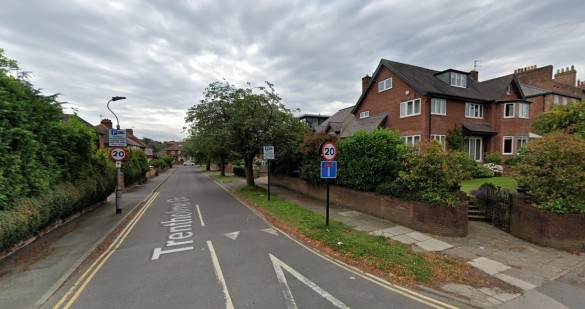
Trentholme Drive
This led to the first formal excavation of a Roman cemetery in Britain. There were 53 cremations and over 340 skeletal remains found between 1951 and 1959, in a small area of about 950 square metres between 137 The Mount and 147 Mount Vale.
Archaeologists and historians used pottery and coins from the site to conclude that this was part of cemetery that had been in use from the 2nd - 4th century. The coins found were minted from a wide area including Rome, France and Germany, hard evidence of the spread of the Roman Empire over fifteen hundred years ago.
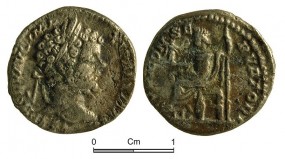
Denarius from AD 193 – 211, similar to one found at the Trentholme Drive site. Courtesy The Portable Antiquities Scheme/ The Trustees of the British Museum.
The former Newington Hotel, on Mount Vale was just a few yards down the road from Trentholme Drive. In 2016 plans were approved to convert it into residential accommodation and excavations started on the site. 78 burials and two possible cremations were uncovered there. One of the most fascinating discoveries on the Newington Hotel site was evidence of an amputation. However, several years previously, on another burial site nearby, skeletons had been found with much more puzzling injuries.
Racegoers walking towards the racecourse past the back gardens of Driffield Terrace might be going to watch a relatively non-violent sport, but they would be passing the remains of people who may have been involved in something much more violent than horse racing. In 2004 and 2005 land in Driffield Terrace was excavated and another burial ground was found. A total of 80 skeletons were found and the discoveries there made national headlines. The majority of the skeletal remains had been decapitated. Studies of the skeletons also revealed that in life these people had received injuries that are commonly associated with fighting, Who these people were and why they were beheaded still remains a mystery, although several theories have been put forward.
These are just three of the burial grounds discovered in York over many years. The history group is fortunate in having perhaps the most numerous and fascinating Roman resting places nearby in York.
The Romans in Britain tended to bury their dead outside their towns, and usually near and alongside the approach roads to those towns. The road between Blossom Street and The Knavesmire lies very near, and sometimes over, the old Roman approach road to the city of York (Eboracum). People have found evidence of Roman burials in this area for centuries. Eburacum, Roman York, (available online, see below) records many of these finds.
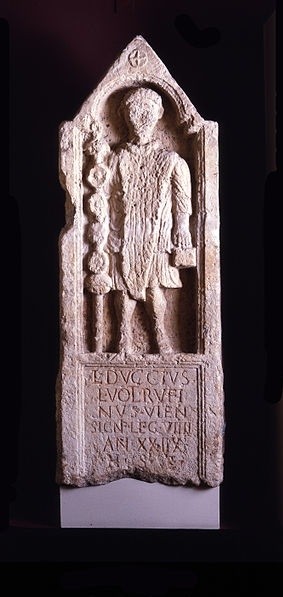 As long ago as the late 17th century, the tombstone of Lucius Duccius Rufinus, a 28-year-old standard bearer of the Ninth Legion was found in Micklegate.
As long ago as the late 17th century, the tombstone of Lucius Duccius Rufinus, a 28-year-old standard bearer of the Ninth Legion was found in Micklegate.
The tombstone of Lucius Duccius Rufinus. (Image courtesy of York Museums Trust)
A tombstone to Julia Velva was discovered in 1922 just 15 yards from The Mount. This commemorated Julia Velva, who, according to the inscription “had lived for 50 years, most dutifully”
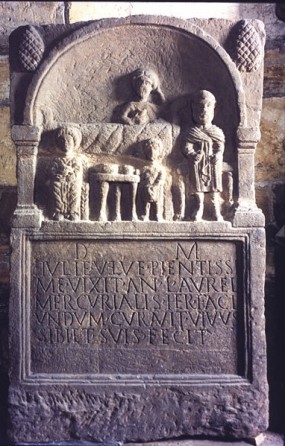
The tombstone of Julia Velva
(Image courtesy of York Museums Trust)
During the 19th century, The Mount became one of the fashionable places to live and even more discoveries were made in the area, as fine new houses were built here. Sadly, during this period, many valuable historical remains were lost, as there was not then the systematic procedure for investigating and recording sites of historical importance that there is today.
By 1951, when schoolboy Richard Yorke took his rather macabre finds from Trentholme Drive to the Yorkshire Museum, it took only two weeks for the Ministry of Works to commission Leslie Peter Wenham to start excavations. This excavation was important because it was the first ancient cemetery in York to be examined archaeologically rather than unearthed in building work.
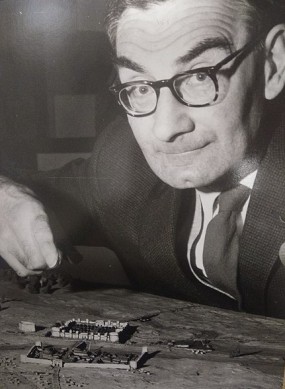 Local schoolchildren and students worked alongside Leslie Wenham on the excavations. It seems that, unlike today, the site was clearly visible to the general public, some of whom rather annoyingly gave Wenham a running commentary on the work in progress. The Yorkshire Evening Post reported that when the jawbone of a horse was uncovered, Wenham was barraged with so many questions that he told the onlookers that he had uncovered the remains of a Roman Derby winner. Unfortunately some of the spectators believed him.
Local schoolchildren and students worked alongside Leslie Wenham on the excavations. It seems that, unlike today, the site was clearly visible to the general public, some of whom rather annoyingly gave Wenham a running commentary on the work in progress. The Yorkshire Evening Post reported that when the jawbone of a horse was uncovered, Wenham was barraged with so many questions that he told the onlookers that he had uncovered the remains of a Roman Derby winner. Unfortunately some of the spectators believed him.
Leslie Peter Wenham 1911-1990 (Image courtesy of York Museums Trust)
Wenham and his team concluded that the burnt debris they found on the site came from a Roman crematorium, or ustrina, that had been used from about 140 AD. They found evidence of 53 cremations, usually as calcified bones in or around the remains of ceramic urns.
Over 340 skeletal remains were found. In its early days, until about 180 AD, cremations had been the norm, but both burial practices continued, with burials taking over from cremations by the end of the 4th century, when the cemetery seems to have been rarely used.
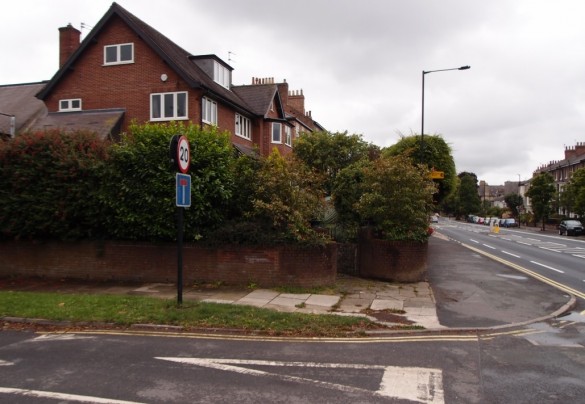
Site of the Trentholme Drive excavations, the house is now built over much of the site.
The majority of the bodies had been buried in coffins, which had rotted away, leaving only their iron nails behind. The Romans had placed jars, bowls and urns containing foodstuffs in the graves. The team found that coins had been placed in the mouths of some of the dead. These practices indicated that the burials were pagan rather than Christian. The quality of the grave goods suggested that the site had been used for people of fairly humble status.
Clearly, what Wenham found was only part of a larger burial site and we do not know how big it was. The main road from York to Tadcaster (Calcaria) would probably have formed a boundary, and the marshy ground on the Knavesmire would have made for a rather difficult burial ground. The site may therefore extend behind Trentholme Drive, towards Albemarle Road, and north and south adjoining the Roman York to Tadcaster Road.
Walking from Trentholme Drive towards the Knavesmire, along the main road, there is a row of houses just before Knavesmire Road at Mount Vale. Many readers will remember the Newington Hotel, here until 2016. The Hotel had been converted from houses, which had been built in the 1820’s. Mike Harrison, the owner, applied for planning permission to convert the hotel back to residential accommodation and York Archaeological Trust carried out investigations on the site in 2017. They found 76 burials, and two possible cremations there. It is likely that this was part of the same cemetery as the one at Trentholme Drive, and probably the most southerly part, it being very close to the Knavesmire. In common with the remains found at Trentholme Drive, lack of high quality grave goods and few grave markers suggested that the people laid to rest here were not high up the Roman social scale.
Follow this You Tube link to watch the Newington Hotel archaeological site open day in 2017.
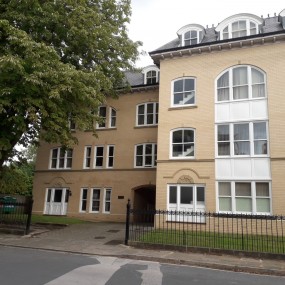 Kings Cloisters, Driffield Terrace
Kings Cloisters, Driffield Terrace
Across the road from the Mount Vale and Trentholme Drive, behind and underneath housing on Driffield Terrace, is a quite different burial ground. It is difficult to establish exactly what sort of people occupied this site. In 2004, plans were submitted to build on an area of open land at 3 Driffield Terrace. This completed development is now known as King's Cloisters. The owners of 6 Driffield Terrace were also planning to do some landscaping work to their back garden. As a result of these forthcoming disturbances to the land there, York Archaeological Trust started excavations on the two sites.
In total on both sites 80 burials and 14 cremation burials were uncovered, and in 2009, a further two skeletons were found during building work on the site. This was not unexpected, as the area was well known for producing evidence of burials and cremations, but what was startling was that 48 of the 82 skeletons had been decapitated. Decapitations were not uncommon in Roman Britain but it was unusual to find such a high incidence in such a small area.
The demographic of the burial ground was also unusual. The majority of the remains were adult males, under 45 years old. Only one of the skeletons was identified as female, and she was also under 45. They were buried with care and over a period of time. There was a high incidence of injuries that were consistent with inter-personal violence, such as injuries to the head and face, and tooth fractures. There were bite marks from what was though to be a large carnivorous animal on the pelvis of one of the skeletons.
One of the male skeletons had iron rings around his ankles, which do not seem to have been worn as fetters, and look as though they were welded into rings, in situ on the unfortunate man’s legs either while he was alive, or after he had died. No one has been able to explain conclusively why the man wore these rings.
York Archaeological Trust in their role as an educational charity has put together a series of video discussions about the Driffield Terrace findings. Read here.
The majority of the resources listed are available online and make for fascinating reading. I challenge you to walk past Trentholme Drive, Driffield Terrace and Mount Vale and not spare a thought for the hidden histories of people who lived and died in York over 1500 years ago.
Sources
Caffell, A and Holst, M, Osteological Analysis 3 and 6 Driffield Terrace York North Yorkshire; a report prepared by York Osteology Ltd for York Archaeological Trust, York (2012). Available at:
https://www.york.gov.uk/downloads/file/5304/syo1905-3-and-6-driffield-terrace-osteological-report (accessed 21 July 2020)
Cool, H E M, Selected Roman Small Finds from the Cemetery at nos. 3 and 6 Driffield Terrace, York (2015). Available at:
https://www.yumpu.com/en/document/read/55198713/driffield-terrace-roman-small-finds (accessed 21 July 2020)
Historic England listing. Available at:
https://historicengland.org.uk/listing/the-list/list-entry/1257141 (accessed 21 July 2020)
Hunter-Mann, K, Driffield Terrace, An Insight Report; York Archaeological Trust for Excavation and Research (for Finding the Future), York (2015). Available at:
https://static1.squarespace.com/static/5c62d8bb809d8e27588adcc0/t/5d0779edfb33ed00011bbe70/1560771061518/Driffield-Terrace.pdf (accessed 21 July 2020)
Ottaway, P, Roman York (special online edition) (2009): Tempus/The History Press: Available at:
https://www.pjoarchaeology.co.uk/docs/12/roman-york-special-edition.pdf (accessed 21 July 2020)
Prest, V, York hotel to close and be turned into houses; The Press, York (9 January 2016). Available at:
https://www.yorkpress.co.uk/news/14191112.york-hotel-to-close-and-be-turned-into-houses/ (accessed 21 July 20)
"Roman York: Burials," in: An Inventory of the Historical Monuments in City of York, Volume 1, Eburacum, Roman York, (London: Her Majesty's Stationery Office, 1962), 67-110. British History Online. Available at:
https://www.british-history.ac.uk/rchme/york/vol1/pp1-4 (accessed 21 July 2020)
Savine, B, Archaeological Investigations at the Former Newington Hotel, Mount Vale; York Archaeological Trust Assessment Report 2017/76, York (2017). Available at:
https://www.york.gov.uk/downloads/file/4618/syo2082-newington-hotel-exc (accessed 21 July 2020)
Wenham, Leslie P, The Romano-British Cemetery at Trentholme Drive, York; Ministry of Public Building and Works Archaeological Report no 5, H M S O, London (1968)
Yorkshire Evening Post; A Roman Derby Winner; (10 November 1951) British Newspaper Archive, online.



